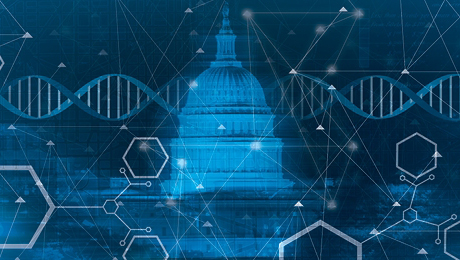Researchers running genomic analyses at the George Washington University’s Colonial One High Performance Computing Center will pilot ultra high-speed 40 gigabit per second data transfers from the National Institutes of Health’s National Library of Medicine, using new 100 gigabit per second links to the Internet2 Network. Internet2 is a computer networking consortium led by members from research and education communities, industry and government.
The extremely large data sets used in today’s medical research require high-bandwidth access, said Don Preuss, who heads the systems group at the National Library of Medicine’s National Center for Biotechnology Information. The new 100 gigabit connection to the Internet2 backbone will provide researchers at GW with “state-of-the-art connectivity,” he said.
“High speed transfers via Internet2’s Network will enable us to provide our genomic clients with faster results, ultimately hastening discovery and therapeutic decisions," said Raja Mazumder, associate professor of biochemistry and molecular medicine in the School of Medicine and Health Sciences.
Dr. Mazumder is co-developer of the High-performance Integrated Virtual Environment (HIVE)—a genomic analysis platform that he developed with Vahan Simonyan, a lead scientist at the Food and Drug Administration.
HIVE provides a novel approach to computation that greatly speeds up the analysis of genomic data. Internet2 featured the HIVE genomic analysis platform at the Super Computing 2013 (SC13) conference in Denver last November, as one of the tools to meet the challenge of data-intensive research.
“Internet2 is pleased to be part of this public-private collaboration. Our 100 gigabit network enables a high-performance genomics platform like HIVE to realize its full potential by removing external bottlenecks,” said Internet2 Associate Director Michael Sullivan.
GW connects to the Internet2 backbone through its new research network, the Capital Area Advanced Research and Education Network (CAAREN). CAAREN provides high-performance research and education infrastructure to government, education and research organizations, as well as some private-sector organizations, in the Washington, D.C. area. It will facilitate world-class research, education and knowledge sharing in the nation’s capital.
CAAREN is partnering with DC-Net, a program managed by the D.C. Office of the Chief Technology Officer, to provide public and private K-12 schools, public libraries, museums, hospitals and independent research organizations with access to Internet2.
CAAREN will enhance collaboration and reduce barriers to research, education and health applications, supporting the national capital region as a center of cutting-edge knowledge.


